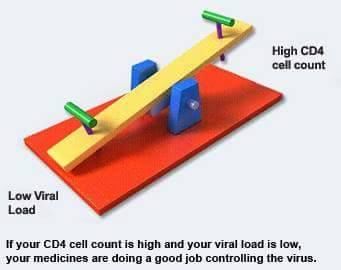Relationship Between Cd4 and Viral Load in Hiv Patients
Relationship Between Cd4 and Viral Load in Hiv Patients
If you're not currently taking hiv treatment
Hiv treatment is recommended for all people living with hiv. However if you have chosen not to take treatment for the moment, looking at your viral load and cd4 cell count can help predict your risk of becoming ill because of hiv in the future. While your cd4 cell count is the main indicator your doctor will use to help monitor the health of your immune system, viral load testing can also provide important information.
Among people with the same cd4 cell counts, research has shown that those with a higher viral load tend to develop symptoms more quickly than those with a lower viral load.
In addition, among people with the same viral load, those with lower cd4 cell counts tend to become ill more quickly.
Monitoring the effectiveness of treatment
Effective hiv treatment results in a fall in your viral load. Within about four weeks of starting hiv treatment, your doctor should test your viral load to see how much it has fallen.
The aim of treatment in people who have never taken anti-hiv drugs before is to get viral load to undetectable levels (below 20, 40 or 50, depending on which test your clinic is using) within six months.
If your viral load never becomes undetectable, or increases to become detectable in two consecutive tests after it has been undetectable, your doctor will review the treatment you are on to see if it is still working effectively and talk to you about the possibility of changing treatment.
As your viral load falls, your cd4 cell count should begin to increase slowly.



+1.svg)
